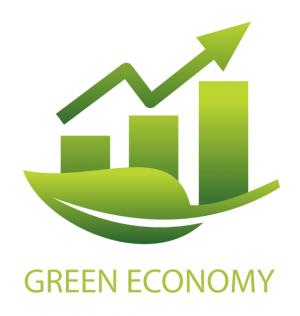Sustainable Skylines Program
Description
Source: UNCSD Secretariat (2010) Questionnaire for the Member States on Experiences, Success Factors, Risks and Challenges with Regard to Objective and Themes of UN Conference on Sustainable Development (UNCSD)
The Sustainable Skylines Initiative (SSI) is a U.S. Environmental Protection Agency (EPA) program designed to use air quality regulatory needs, climate action goals and other local environmental priorities as the catalyst for integrated sustainability actions. These actions can provide communities with a range of complementary benefits for their people, their prosperity and the planet.
The SSI is a collaborative effort that brings together the resources of the EPA, other government agencies, as well as non profit and private organizations to support individual communities. Initial SSI programs are underway in Dallas, Texas; Kansas City Kansas and Missouri; and Philadelphia, Pennsylvania. SSI programs are designed to meet the local circumstances of participating communities. Each program can also provide lessons that will be shared through and beyond the national SSI program network.
Under the SSI, an area can choose to perform projects from seven categories: renewing community livability, climate change and energy efficiency, land use and transportation strategies, fossil-fueled engine and motor sources, green buildings development, facilities and businesses and innovative and sustainable practices. While the primary focus of SSI is air, communities are encouraged to select activities which will result in synergistic reductions from all medias such as water, hazardous/solid waste, and energy. The SSI is not a regulatory program nor is it an in-lieu of regulatory program. A strong performance accountability mechanism is incorporated into the framework for both the community and all participating partners. This framework can help communities achieve measurable emissions reductions within 3 years.
SDGS & Targets
Goal 8
Promote sustained, inclusive and sustainable economic growth, full and productive employment and decent work for all
8.1
8.1.1
Annual growth rate of real GDP per capita
8.2
Achieve higher levels of economic productivity through diversification, technological upgrading and innovation, including through a focus on high-value added and labour-intensive sectors
8.2.1
Annual growth rate of real GDP per employed person
8.3
Promote development-oriented policies that support productive activities, decent job creation, entrepreneurship, creativity and innovation, and encourage the formalization and growth of micro-, small- and medium-sized enterprises, including through access to financial services
8.3.1
Proportion of informal employment in total employment, by sector and sex
8.4
Improve progressively, through 2030, global resource efficiency in consumption and production and endeavour to decouple economic growth from environmental degradation, in accordance with the 10-Year Framework of Programmes on Sustainable Consumption and Production, with developed countries taking the lead
8.4.1
Material footprint, material footprint per capita, and material footprint per GDP
8.4.2
Domestic material consumption, domestic material consumption per capita, and domestic material consumption per GDP
8.5
8.5.1
Average hourly earnings of female and male employees, by occupation, age and persons with disabilities
8.5.2
Unemployment rate, by sex, age and persons with disabilities
8.6
8.6.1
Proportion of youth (aged 15-24 years) not in education, employment or training
8.7
Take immediate and effective measures to eradicate forced labour, end modern slavery and human trafficking and secure the prohibition and elimination of the worst forms of child labour, including recruitment and use of child soldiers, and by 2025 end child labour in all its forms
8.7.1
Proportion and number of children aged 5‑17 years engaged in child labour, by sex and age
8.8
Protect labour rights and promote safe and secure working environments for all workers, including migrant workers, in particular women migrants, and those in precarious employment
8.8.1
Fatal and non-fatal occupational injuries per 100,000 workers, by sex and migrant status
8.8.2
Level of national compliance with labour rights (freedom of association and collective bargaining) based on International Labour Organization (ILO) textual sources and national legislation, by sex and migrant status
8.9
By 2030, devise and implement policies to promote sustainable tourism that creates jobs and promotes local culture and products
8.9.1
Tourism direct GDP as a proportion of total GDP and in growth rate
8.10
Strengthen the capacity of domestic financial institutions to encourage and expand access to banking, insurance and financial services for all
8.10.1
(a) Number of commercial bank branches per 100,000 adults and (b) number of automated teller machines (ATMs) per 100,000 adults
8.10.2
Proportion of adults (15 years and older) with an account at a bank or other financial institution or with a mobile-money-service provider
8.a
8.a.1
Aid for Trade commitments and disbursements
8.b
By 2020, develop and operationalize a global strategy for youth employment and implement the Global Jobs Pact of the International Labour Organization
8.b.1
Existence of a developed and operationalized national strategy for youth employment, as a distinct strategy or as part of a national employment strategy
SDG 14 targets covered
Deliverables & Timeline
Resources mobilized
Partnership Progress
Feedback
Action Network


